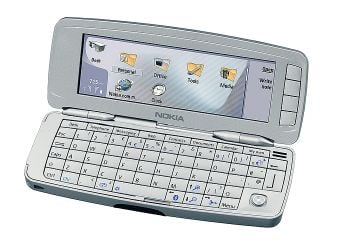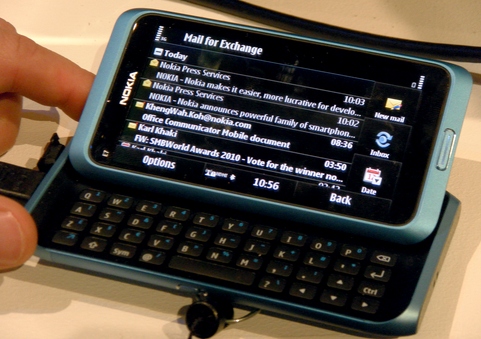This article is more than 1 year old
Hands-on with the new Nokias
Two Cs and an E. Is that a pass grade?
'Nothing beats a real keyboard'
Departing phone boss Anssi Vanjoki boldly declared that the E7 is the heir to the communicator, and spent a lot of time celebrating Nokia's welding a PDA to a phone, in the Nokia 9000. And at first sight, with its large four-inch display, you wonder if it fulfils the promise. In practice though, it's more honest to describe it as a much improved N97. To many users of the Symbian 6.0 and 7.0-based Communicators , with their Psion heritage largely intact, the comparison will be heresy, because two of the things to make up a Communicator – rich application software and an optimized keyboard – are absent.

For example, the E7 has a large four-inch screen (640x380 pixels). But the time Vanjoki devoted to 9000 nostalgia allowed us to notice that the monochrome brick displayed much more information on its screen than the 21st-century counterpart. Even Nokia's pen-based 2005 UI offered much more richness, and made very advanced functionality quite accessible. But then that's because it was designed from the ground-up to be a touch-screen UI - the true successor to the original Commie.
The other area where it falls down, if comparisons must be made, is with the sub-par keyboard.

The Nokia E7
“Nothing beats a real keyboard,” but this isn't a real keyboard, as any veteran of the 80-key Communicators will tell you. The Communicator designers devoted as much space as they could to a keyboard. With the E7, as with the N97, the angled screen represents form over function – it sucks up 40 per cent of available surface area for what might otherwise be used for the QWERTY keyboard.
So things move on, and they don't always go forward.
If can you forget the Communicator comparison, the device fares rather better. Build quality is outstanding, and it has that rare combination of robustness and lightness – particularly welcome in a quite wide device. The keyboard is much more positive in its action than the N97, being firm and clicky. The E7 retains the folding hinge of the notorious N97, too, but uses an extra row of keys. (The Communicators had six rows – the sixth devoted to application keys.) Nimble fingers might be able to use more than thumbs, and spider two or three fingers onto the keyboard - something you could last do on an 9500, but not particularly comfortably.
There are small improvements to the messaging app – here seen running Mail For Exchange – but it's the weakest point of the built-in software suite. Power users will still want to download ProfiMail and Opera. Elsewhere it has the same performance and usability tweaks seen across the new Symbian^3 devices. Scrolling through the gallery is near-instant, just as on an iPhone, and finding and calling contacts is greatly improved.
It evidently isn't a dedicated data UI. For example, the text label of the social networking application is truncated to 'Social Netwk.'. This is typical of a UI that was designed for one-handed use then, with a squeal of the brakes, retro fitted to do Touch.
My disappointment is that despite Savander's claim that it produces lots of models to cater to the very different needs of its users, there still isn't something optimised to QWERTY fans.
In his farewell keynote, Vanjoki made the bold claim that "Nokia is back" – but this is more about stemming the haemorrhage of Nokia users both to whizzy new platforms and mid-range rivals. Next year, and a range of new devices, might allow Nokia to claim leadership once again. The company will probably be glad to put 2010 behind it. ®
*C is for “consumer”. Or for “common”.
